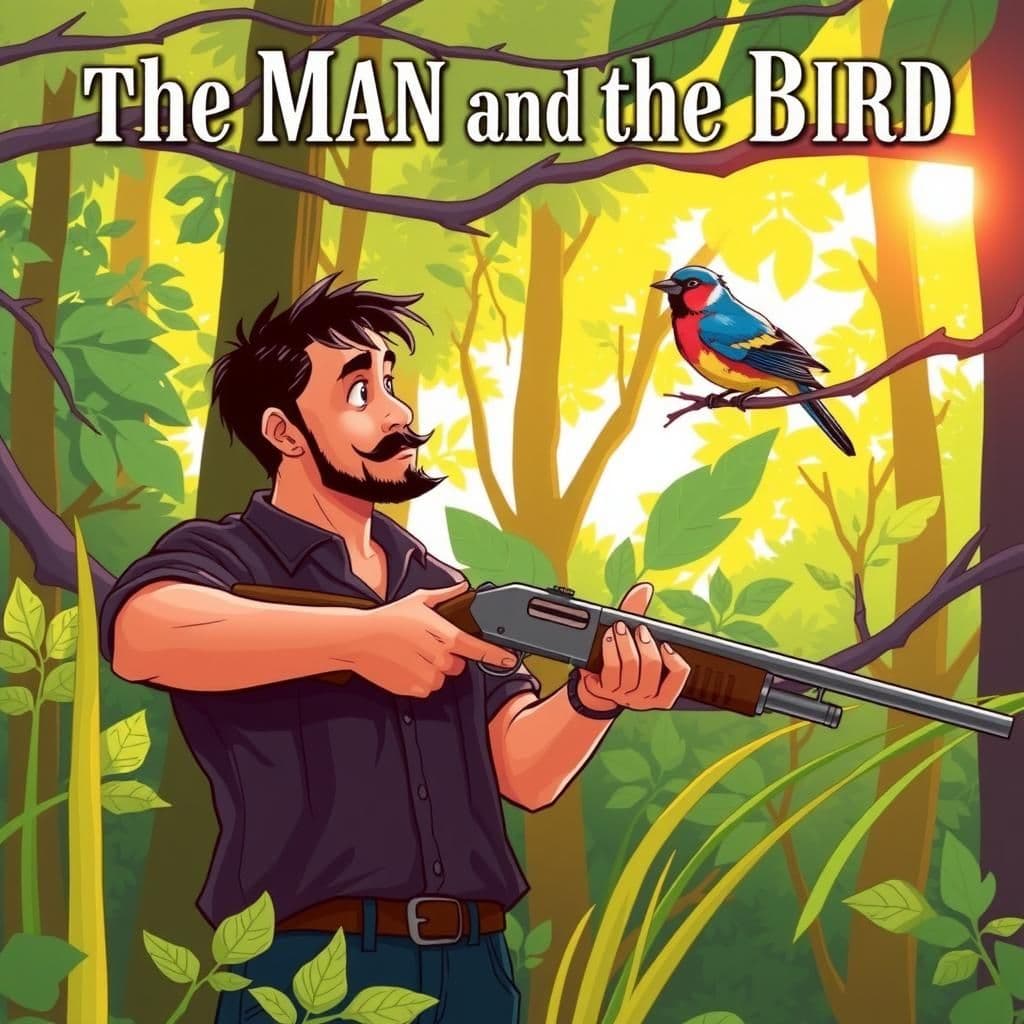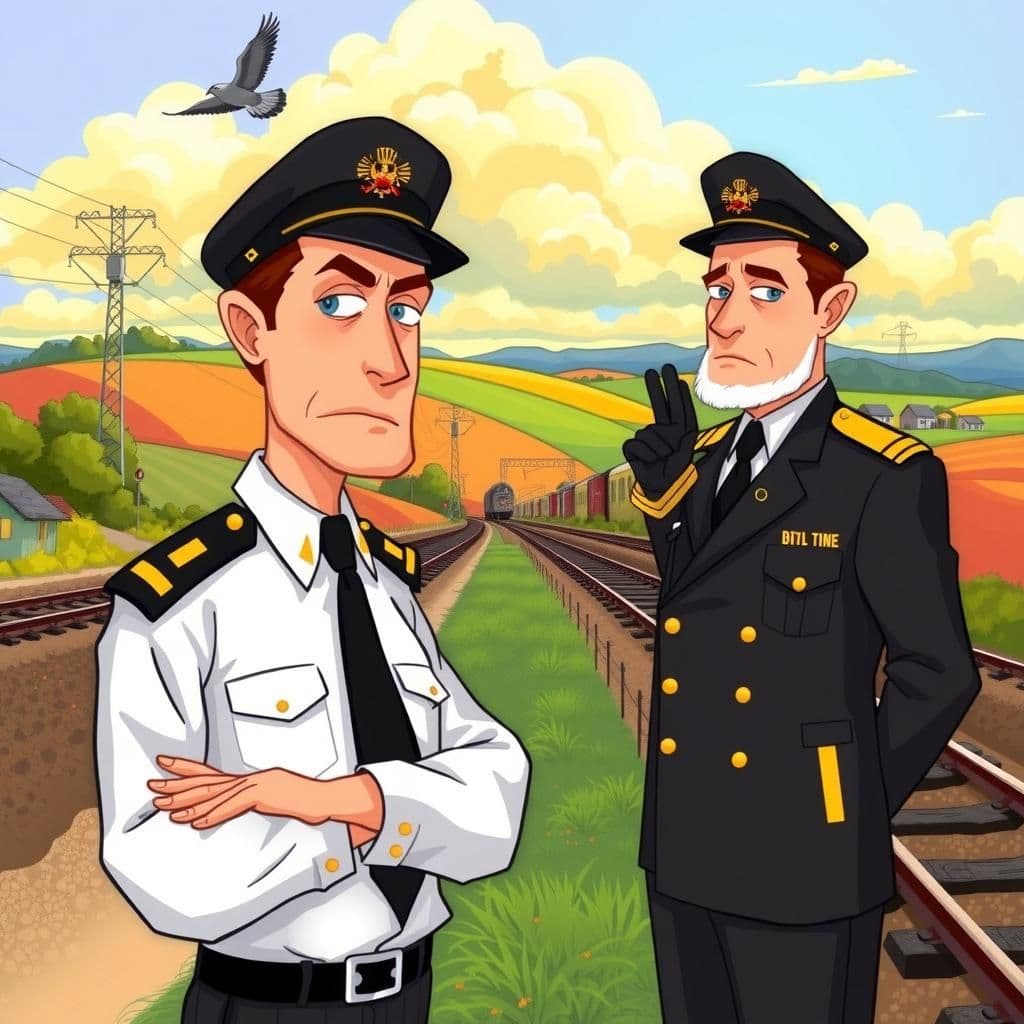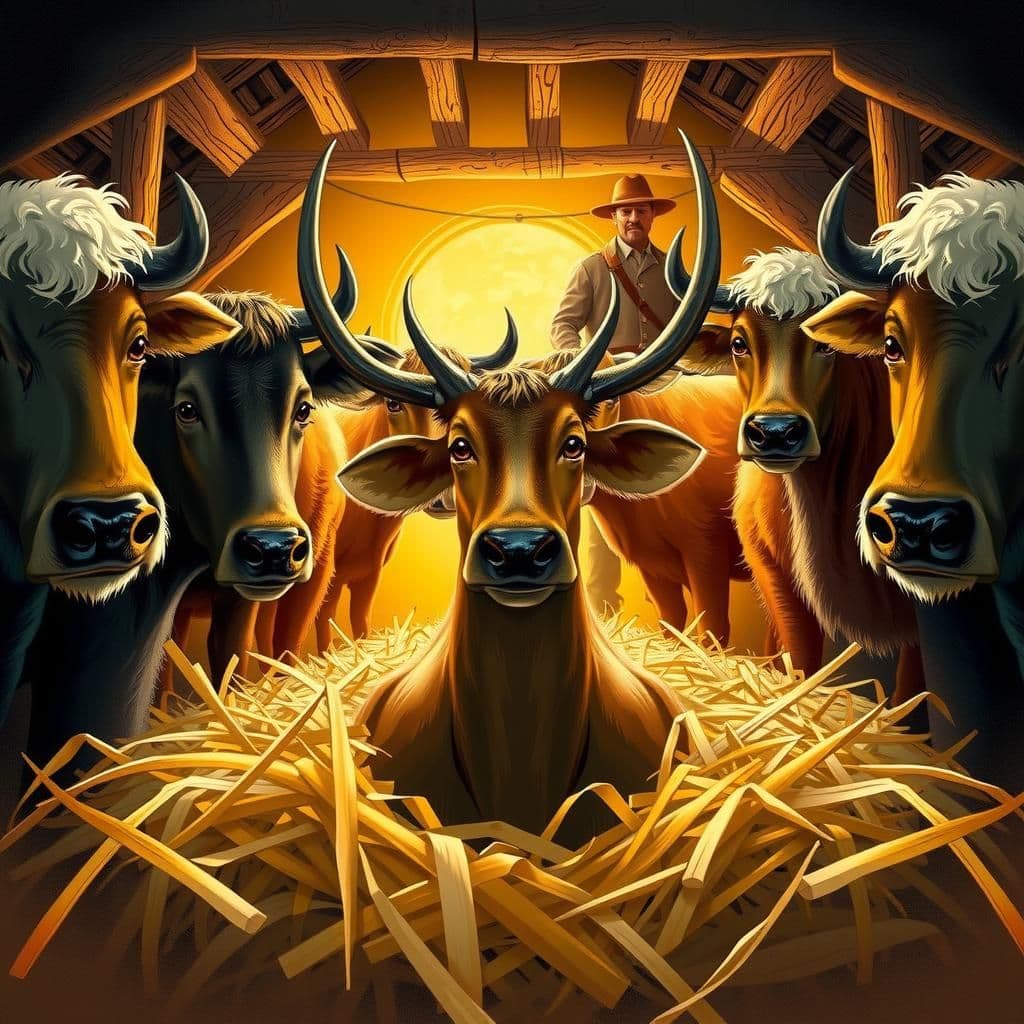The Man and the Bird

Story Summary
In "The Man and the Bird," an engaging moral tale, a man with a shotgun argues that hunting is a fair contest of skill versus cunning, but the bird counters that the stakes are vastly different—its life is on the line while the man gains nothing meaningful. Unable to justify his actions, the man ultimately shoots the bird, highlighting the disparities between predator and prey. This heartwarming moral story serves as a poignant reminder of the ethical implications of such encounters.
Click to reveal the moral of the story
The moral of the story is that true fairness in a competition requires that both parties have something to gain, and when one side faces disproportionate stakes, the game is not just.
Historical Context
This story reflects themes of power dynamics and the ethics of sport, reminiscent of Aesop's Fables, which often feature anthropomorphized animals and moral lessons. The dialogue highlights the inherent inequality in human-animal interactions, echoing cultural narratives around hunting and the often unacknowledged consequences for the hunted. Such tales can be found in various cultural contexts, illustrating the tension between human interests and the natural world, as seen in works from the Romantic period to modern environmental literature.
Our Editors Opinion
This story highlights the disparity in stakes and power dynamics in competitive situations, reminding us that fairness is not merely about equal opportunity but also about the value of what is at risk. In modern life, this applies to scenarios like job interviews, where an employer may see the process as a fair competition for a role, while the candidate risks their livelihood and self-esteem—a disparity that can make the "game" feel deeply uneven.
You May Also Like

The Conscientious Official
In "The Conscientious Official," a misguided railway Division Superintendent, while tampering with tracks, learns of his impending dismissal for incompetency. He argues that although there are many accidents on his division, they inflict less damage to the company's property than potential alternatives, revealing a twisted sense of duty. This life-changing story serves as a fable with moral lessons about responsibility and the consequences of misguided actions.

The Hare and the Hound
In the well-known moral story "The Hare and the Hound," a hound chases a hare but eventually gives up, prompting a goat-herd to mock him for losing the race. The hound explains that while he was only running for a dinner, the hare was running for his life, illustrating the difference in their motivations. This quick moral story serves as a classic example of fable stories with moral lessons, perfect for childhood stories with moral teachings.

The Master's Eye
In "The Master's Eye," a stag seeks refuge in an oxen stable, promising the oxen valuable information about pastures in exchange for their secrecy. Despite their initial support, the stag is ultimately discovered by the overseer, leading to his demise, which highlights the importance of vigilance and the consequences of misplaced trust. This impactful moral story serves as a cautionary tale, reminding readers of the timeless lessons found in the top 10 moral stories and short stories with moral for adults.
Related Collections
Other names for this story
"Fair Game, Shotgun Dilemma, The Bird's Choice, Cunning vs. Skill, The Price of Sport, A Game of Wits, The Stake of Life, The Man's Quandary"
Did You Know?
This story highlights the theme of power dynamics in sport and competition, illustrating how the stakes for one party can vastly outweigh those for another, ultimately questioning the morality of such contests. The bird's refusal to participate underscores a deeper critique of the ethics surrounding hunting and the exploitation of the vulnerable.
Subscribe to Daily Stories
Get a new moral story in your inbox every day.